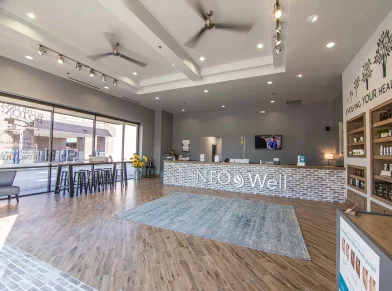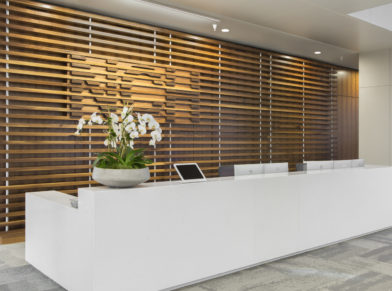5 ASPECTS OF SUCCESSFUL WEB DEVELOPMENT PROJECTS

Building a new website can be a complicated process, requiring a lot of decisions based on a technical and creative process that many know very little about. While getting the web to shine light to billions of people across the planet in exactly the way that promotes your brand, platform, and business sounds daunting and overwhelming… it isn’t if you are doing it right. There is a certain energy to the teams that build successful web sites and applications, and if you are able to recognize it and harness it – you will create a quality result every time.
Aspect 1 – A Team
While no doubt, great websites have been built by one guy in his basement doing everything in a weekend with an IV of Red Bull and loud music, they typically don’t have long term success. The first aspect of building a great website is the recognition that it is the creation of a team and not of a single individual. The process is simply too large to be done well by a single individual in a reasonable time frame.
There are typically three to four groups involved in a building out a great website.
- The Customer – this is the person who has the most information about the website to be built because it is ultimately their creation. The website the customer wants is largely only obtained by communication with the customer. The customer often knows what the website should “feel” like before a single bit of design or work has been done. While this is the single most important piece of the process of building a website, very little attention is given to it and it is often overlooked. The best teams work to get the customers feeling in line with the technical, creative, and business aspects of the process.
- Design Team – this group is responsible for building the non-functional, initial diagrams of what the website will specifically look like. The best visual designers are those that can also do some of the technical work required, but are more idea driven than implementation driven. These guys spend a lot of time on the web and know what is going to be visually appealing and functional to the user of today.
- Technical Team – this is the group that typically exists in the dark catacombs of some cave with nothing but wires coming out, just kidding. The technical team is responsible for taking the feeling and vision of the customer and designer, and parsing it out into great technical detail so that it can be delivered to millions of people world wide. The technical team is concerned with ensuring the vision and design of the team is honed with what the real world can actually provide.
- Business Team (for eCommerce Sites) – while not always a separate group, the business team is concerned with aspects of how a site integrates, enhances, and encourages revenue-generation. This team is focused on the specifics of the eCommerce experience, such as order processing and fulfillment, analytics and marketing of the site to generate users, and how the site functions as the first-line customer service tool for the business.
Aspect 2 – A Goal
The customer doesn’t typically build a new website on a whim. Time must be taken by the customer to reason and analyze what their goals ultimately are. Do you want a better user experience? Are you looking to drive more traffic to your site? Are you simply tired of dealing with your current website? Do you want to enhance your eCommerce conversion? All great websites start with clear goals.
When I meet with a potential client that cannot communicate this in a very specific and well thought out plan, I will not take the job. The customer has to play the role of knowing what the customer wants. If the customer doesn’t know, than a professional engagement where they pay me to persuade them to believe that what I tell them is what they want… well its always been a bit strange to encounter this kind of proposal. But it does happen and it’s kind of scary when it does.
It is the customer’s job to the team to ensure every single member is informed of the goal at the very beginning. The customer needs to meet every person in the project and communicate this goal to them and simply ask, “How are you going to help me meet this goal?” If the designer can’t answer that question – its time for a new designer. If the technical team didn’t respond with questions about specific numbers or server technology to be used– time for a new technical team. If the business team didn’t respond with a question about conversion %, bounce rates, and what marketing outlets have and have not been explored…. Time for new business team.
Each member of the team needs to feel like they are playing their part in the successful team. Some guidelines for gaguing how your team is meeting this aspect
- Are they asking questions and proposing ideas? Are they actively engaging in the creative and technical process?
- Are they prompt in their communication with you? Are they proactive in their communication?
- Do they perform? Do they do what they say they are going to do? Are they proactive about keeping the whole team informed of anything that affects the process?
- What is their tone in the interaction with you? The tone is, in my experience, most indicative of the eventual result of the team.
Aspect 3 –Visual Design and a Functional Design
When the site is built, the designer should include a writeup on the various ways their drawing should function as a user interacts with it. Anything that moves on the site should be specified. Anything that needs to be computed, such as how a form should perform once it is submitted, should be specified. How should your blog look when its paged? If you want a sliding banner you have to say that. If you want a menu to fade in slowly, you got to say that.
Successful web design teams design what a site looks like and what it acts like.
Particular focus must be on providing the design to the variety of different web browsers that can be used. If you have analytics on the browser distribution of your current site, you need to make sure your team knows this so they can build the site to maximize effect on your specific traffic distribution. But this leads us to an even more important aspect of successful web sites…
Aspect 3.5 – Mobile Focused Team, Responsive Design
Almost every website I’ve seen analytics for in the last 2 years has undergone a very drastic and dramatic shift in the demographics of the browser used to view the site. Mobile devices are the primary way people are going to view your site in the period you have developed it to exist for. A successful team is going to be aware of this and will be bringing every single component of the design back to what it looks like. Many teams have started doing mobile first designs, largely amplified by the semantics of some of the more popular CSS frameworks like Bootstrap 3 and Framework. Some teams split it out into two endeavors or two sites… but all successful web sites are focusing on and enhancing how the site is being displayed on phones.
Sadly, I have not seen this in the eCommerce sector to the degree I think it needs to be done. Many people are still providing large hard to click tables of products to mobile devices – often to mask the fact their search and taxonomy are not relevant to interested customers. This is one of the clearest paths to eCommerce growth to me is maximizing the conversion of 50% of the traffic through simplification and optimization of the mobile experience.
A mobile user is going to spend less time on your site as well. That needs to be acknowledged, and the design needs to recognize the limitation so that it can capitalize on what the user sees. If a user has to hunt to figure out how to contact you, or has to zoom in to hit the next button on your product page and zoom in again to see the photos on it or read the text of the product names, your website will fail to capitalize on the opportunity with a majority of its traffic in the next 5 years.
Maximize the limited time you have with mobile users by greatly limiting the content that is presented to them– while at the same time not prohibiting their access to more detailed inquires. A regular user should be able to have a regular experience – which we can achieve through the use of site cookies – but a first timer needs to enticed into learning about your company or making a purchase by not overwhelming them with finger actions or text.
Aspect 4 – An Issue (Bug) Tracking System (preferably with integrated source control)
This is, in my opinion, the fatal pitfall many teams make… once development begins, the silence gap happens… and grows until the Customer appears disinterested to the developer and the developer unskilled to the Customer. A silence gap in the development process lends itself to many sub-optimal products. The way this is mitigated is through the DILIGENT use of an issue tracking system. All team members should be recording their plan for the next two weeks of work out to the issue tracking system, and regularly commenting on their progress. This allows every member to survey what’s going on… This reminds every team member that they are part of team that relies on them, so that gaps in communication are not possible.
While no web site is ever finished as they are living breathing things that are displayed on technologies that rapidly change….. for the initial build it is important that every member of the team is monitoring and engaging with the issue tracking system. If the visual designer has a quick question for the Customer, they can use the issue tracking system to record that. If it takes more than an hour or two to get a response, they can follow up with a quick phone call – and record the answer to their question in the task so the whole team is aware of the evolution of the creative process.
If you bundle your issue tracking system with your source control you really unlock the key of building a great web site. Great teams use a source control system they are actively committing to. Great teams watch the progress of every other team member’s commits to the source control and actively engage with them based on that. The source control is the component of the development process that allows the team to congeal into a unit that builds the great website. But it has to be wielded properly to do that.
I encourage developers to use the microcommit – commiting small amounts of work on a regular basis. This gives insight into what the developer is doing without interrupting their creative process. It also keeps the developer honest with themselves with what they have accomplished and what they are working towards. In short, it makes them better developers. Every development process has a narrative, and the developer tells that narrative through the commits of the source control.
Add to that the ability to track deployments and version releases and even drive the deployment of the site to a cluster of severs directly from your command line – with little effort – and the technical advantages of diligent source control use becomes crystal clear. This is an aspect of all great technical teams.
Aspect 5 – Testing, Sign Off, and Testing Some More
When a developer gives you a URL to visit to look at the site, that’s telling the team they should begin testing it and tracking issues in the issue tracking system. Remember the developer is in an intensely detailed creative process, so you don’t want to overwhelm them with the obvious or with egocentric urgency. But if you do see something wrong with the site that maybe you want to changed or added, or maybe you’re seeing that it doesn’t look good at all on your browser, log a ticket so they are aware.
All team members should be testing as soon as they can. Even if that’s just one page, the developer needs to hand that off to them as soon as they can. The sooner the developer engages testing in the development process, the less time they have to build something that is fundamentally flawed because it was built on something that was discovered in testing.
When all team members are actively engaged in honing the site, through this stage of the process is when the real magic of successful web sites begins to shine. This can be an immensely fun process where each team member gets to play the role of both painter and art critic simultaneously. When great teams work together closely to build a great product…. That energy has a lasting effect. I’ve seen people come back to companies after many years citing the experience of the time they built the website as one of the “coolest” things they did.
Even after its tested and tested (in IE 8,9,10,11 FF, Chrome, Safari my iPhone, iPad, Android, and a some guys archane Blackberry for some reason, and one guys Wii) and all tickets are resolved and the site is live and generating thousands of dollars of revenue a day…. TESTING IS NEVER OVER. Every member of the team should test the site from time to time and, if they see an issue, log a ticket. Web sites shine their light 24 hours a day, and only those who are diligently verifying the quality and accuracy of the light they shine…. Shine bright.
If you combine these 5 aspects into your web development process, it will create something great for your company for the next several years, serving as a platform for both revenue generation and brand recognition, and acting as a reminder to your team of what they can accomplish when they work together on a creative task.
Now speaking of testing, I have some bugs to fix on this web site. Take care.


























